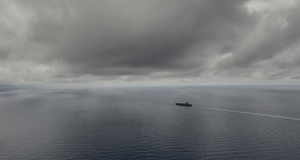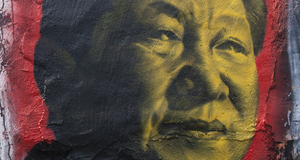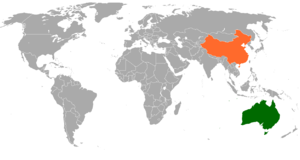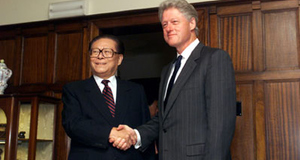Featured Article:The Taiwan Strait: From Civil War to Status Quo
By
2010, Vol. 2 No. 06 | pg. 3/3 | « III: Discussion and Conclusion: How Relevant is the Threat?The conflict between China and Taiwan that began upon the founding of the contemporary Chinese state is now more than 60 years old. In the first two Taiwan Strait Crises, the United States took a bold stance and made it clear to China that it would be willing to use nuclear weapons in the face of aggression. Today though, the situation has little resemblance to the conflict of the 1950s, 60s, or 70s. Not only have the relationships between each party changed, but our international system has also been shaped and changed by major events such as the Cold War, the explosion of the internet, and the realization of “new” threats in terrorism, ethnic violence, and failed-states. Whereas the United States was in the process of building a massive nuclear arsenal during the Taiwan Strait conflicts of the 1950s, today the world seems intent on finding ways to reduce the relevance of such weapons. In consideration of this shifting international landscape, the threat presented by the Taiwan Strait can be viewed from two perspectives, and result in two different readings of the situation.In the first perspective, reflecting the traditional ‘realist’ framework of international relations, China places its primary emphasis on nationalism, in which case Taiwan represents a key component in the context of “a broader national discourse of humiliation and weakness” (Gilley, 2010: 50). Without Taiwan, the Chinese rise to greatness is incomplete and therefore reintegration is essential, regardless of the consequences. In a fundamentally realist reading of the situation, China and the United States are competing for power and security in a zero-sum game, with Taiwan as a critical pawn. If this view of the problem is in fact correct, then the likelihood of conflict is no longer in question: it is only a matter of time. However, as China becomes more and more integrated with the international community, the first case begins to look exceedingly unlikely. Despite mixed rhetoric between the late 1990s and 2005, when tensions appeared to be high, the cultural and economic exchange between the two regions continued to grow consistently. Today, both China and Taiwan have become far more conciliatory and the relationship is arguably better then at any other time since 1949. This trend has changed the situation to a non-zero-sum scenario in which all sides stand to benefit. The key ingredient in this case is stability, and military confrontation would only create many losers. In this second view, the ideas of ‘complex interdependence’ are paramount. While Beijing maintains the long-term goal of Taiwanese unification with the mainland, and Taiwan still insists on maintaining its uniqueness, both sides appear to have abandoned any path in which this is the only goal, and thus consented to a closer relationship. And as this relationship grows, the need for and utility of a resort to force will gradually disappear. The United States, meanwhile, is in the midst of maintaining a balancing act. While the relationship between China and Taiwan expands, the U.S. also has an essential role in avoiding conflict where none is necessary. In short, as Gilley puts it, “Washington now faces a stark choice: continue pursuing a militarized realist approach -- using Taiwan to balance the power of a rising China -- or follow an alternative liberal logic that seeks to promote long-term peace through closer economic, social, and political ties between Taiwan and China” (2010: 44). The latter view would indeed break the pattern that has existed since the beginning of the conflict. The situation presented by the Taiwan Strait has always been viewed in military terms, with military challenges and military solutions. But, against this backdrop, the terms of the discussion about Taiwan have undeniably shifted to occupy a more civilian sphere. As such, the resolution to the conflict will also be likely to mirror this shift, moving away from military confrontation and towards a solution based on expanded economic, cultural, and political ties. ReferencesClark, Cal. (2007). “Taiwan Enters Troubled Waters.” In M. Rubinstein, Taiwan: A New History. New York: M.E. Sharpe. Cody, Edward. (2006). “China Easing Its Stance On Taiwan.” Washington Post. Retrieved from: Cooper, Helene. (2010). “U.S. Arms for Taiwan Send Beijing a Message.” New York Times. Retrieved from: Copper, John F. (2005). Consolidating Taiwan’s Democracy. Lanham, Md.: University of America. Dumbaugh, Kerry. (2009). “Taiwan-U.S. Relations: Developments and Policy Implications.” Congressional Research Service. Retrieved from: “First Taiwan Strait Crisis.” (n.d.). GlobalSecurity.org. Retrieved from: Gilley, Bruce. (2010). “Not So Dire Straits: How the Finlandization of Taiwan Benefits U.S. Security.” Foreign Affairs, (89)1, 44-60. “Gross domestic product 2008.” (2009). World Bank. Retrieved from: Keohane, R. O. & Nye, J. S. (1973). “Power and Interdependence.” Survival: Global Politics and Strategy, 15(4), 158-165. Lamley, Harry J. (2007). “Taiwan Under Japanese Rule, 1895-1945.” In M. Rubinstein, Taiwan: A New History. New York: M.E. Sharpe. Lieberthal, Kenneth. (2005). “Preventing a War over Taiwan.” Foreign Affairs. Retrieved from: Ogden, Suzanne. (2002). Inklings of Democracy in China. Cambridge: Harvard University Press. Phillips, Steven. (2007). “Between Assimilation and Independence.” In M. Rubinstein, Taiwan: A New History. New York: M.E. Sharpe. Roberts, J.A.G. (1999). A Concise History of China. Cambridge: Harvard University Press. Rubinstein, Murray A. (2007). “Political Taiwanization and Pragmatic Diplomacy.” In M. Rubinstein, Taiwan: A New History. New York: M.E. Sharpe. “Second Taiwan Strait Crisis.” (n.d.). GlobalSecurity.org. Retrieved from: Shepherd, John R. (2007). “The Island Frontier of the Ch’ing, 1684-1780.” In M. Rubinstein, Taiwan: A New History. New York: M.E. Sharpe. “Taiwan Relations Act.” (1979). American Institute in Taiwan. Retrieved from: “Taiwan Strait.” (n.d.). GlobalSecurity.org. Retrieved from: “Top ten countries with which the U.S. trades.” (2010). Foreign Trade Statistics. U.S. Census Bureau. Retrieved from: Wang, Peter Chen-main. (2007). “A Bastion Created, a Regime Reformed, an Economy Reengineered, 1949-1970.” In M. Rubinstein, Taiwan: A New History. New York: M.E. Sharpe. “What did Mao really say?” (n.d.). Retrieved from: “White Paper: The One-China Principle and the Taiwan Issue.” (N.d.). Embassy of the People’s Republic of China. Retrieved from: Wines, Michael. (2010). “China Blames U.S. for Strained Relations.” New York Times. Yusuf, Shahid and Kaoru Nabeshima. (2006). China’s Development Priorities. The World Bank. Zheng, Yongnian and Lye Liang Fook. (2007). “China’s New Nationalism and Cross-Strait Relations.” International Relations of the Asia-Pacific, 7, 47-72. Endnotes1.) Pragmatic Diplomacy was a conscious effort by then-President Lee Teng-hui to “upgrade Taiwan’s international status” by participating in international organizations and increasing informal foreign contacts (Clark, 520). 2.) Despite being widely credited for this statement, it is actually unclear whether Mao ever actually uttered the phrase (“What did Mao really say?”, n.d.). 3.) This helps explain why Taiwan has historically paid some smaller countries to recognize its independence claims—and consequently, added very little legitimacy to the movement. Suggested Reading from Inquiries Journal
Inquiries Journal provides undergraduate and graduate students around the world a platform for the wide dissemination of academic work over a range of core disciplines. Representing the work of students from hundreds of institutions around the globe, Inquiries Journal's large database of academic articles is completely free. Learn more | Blog | Submit Latest in International Affairs |


















